Pro tricks for air-tight joints.
14 Expert Tips for Tight Miters
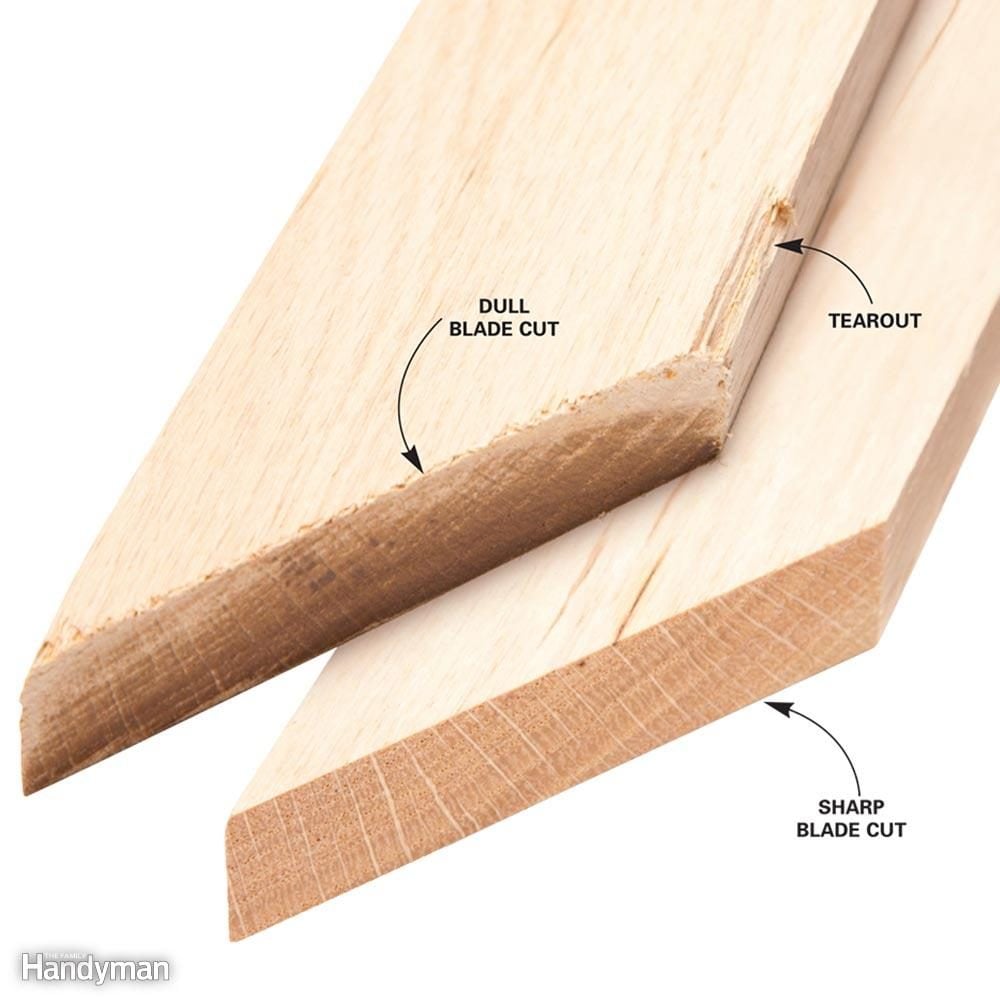
Miters: Use a Sharp Saw Blade
Try out the table saw miter sled in the video below to get started.
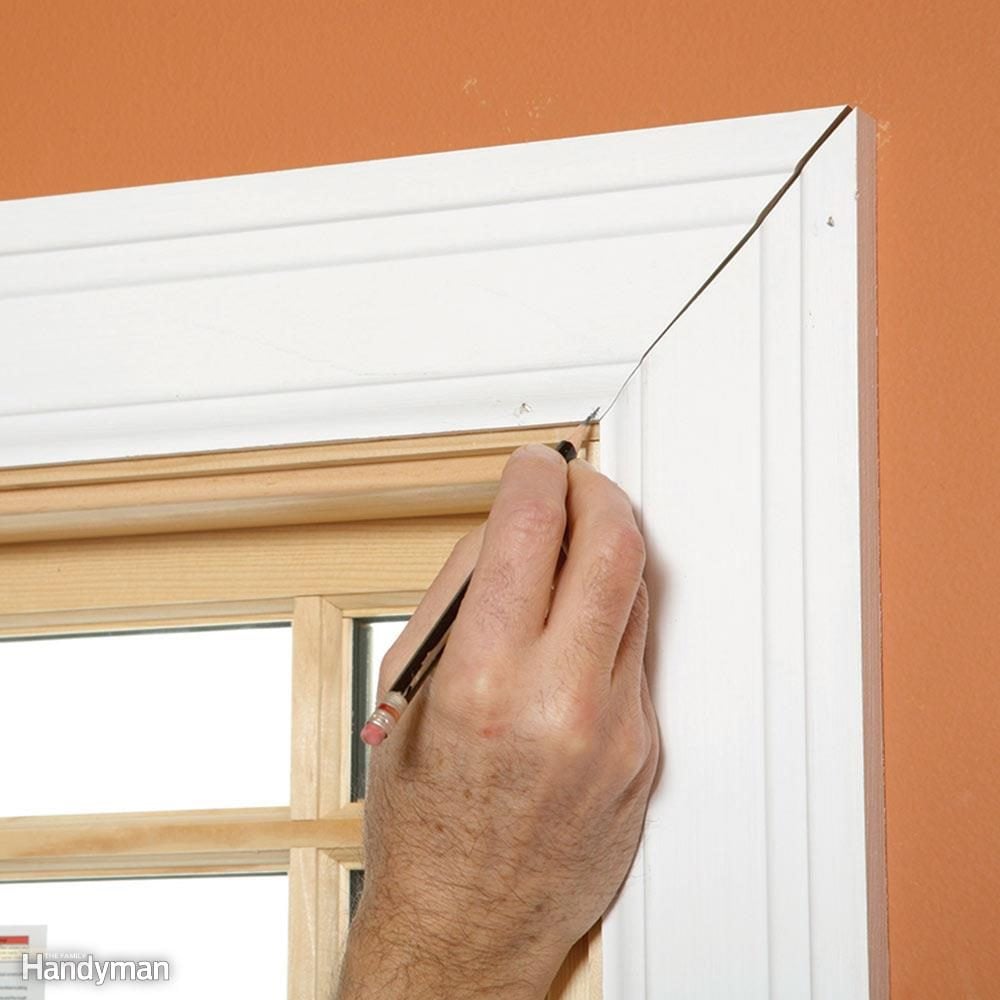
Miters: Tweak the Cut
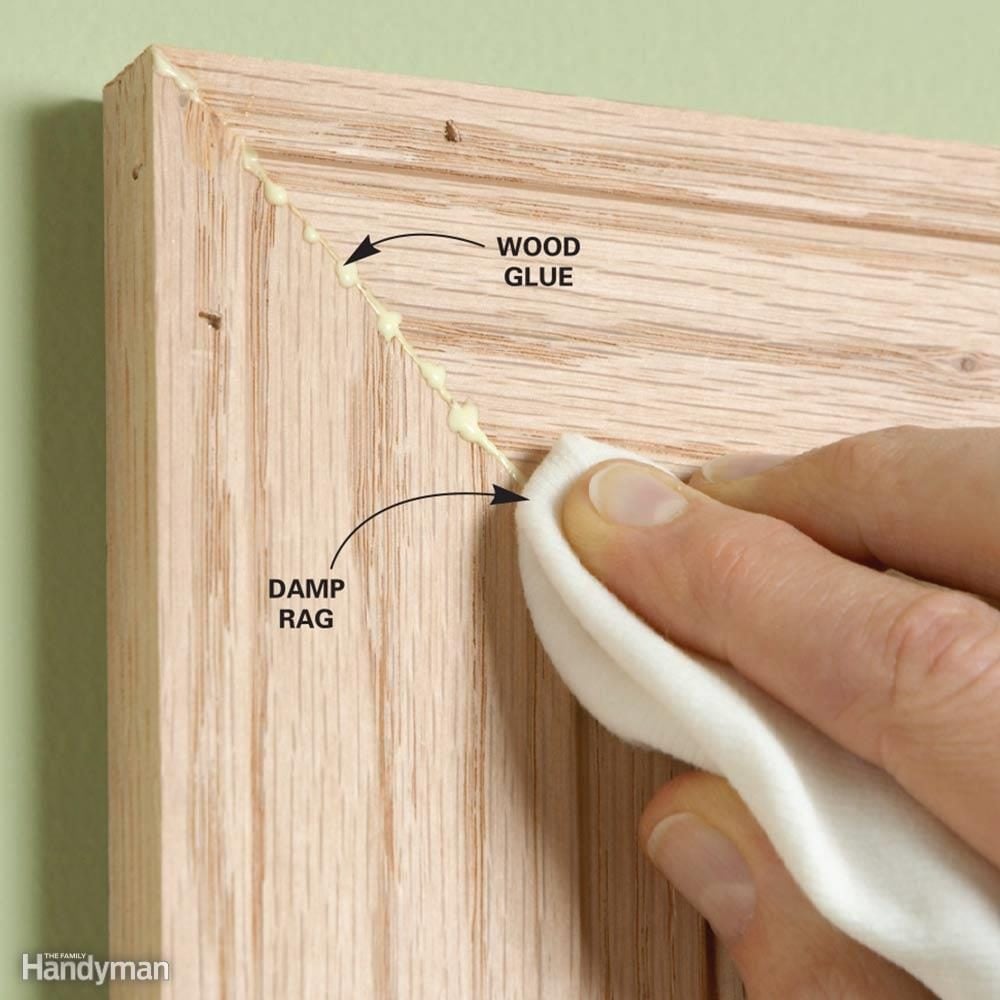
Glue and Sand Miters for a Seamless Fit
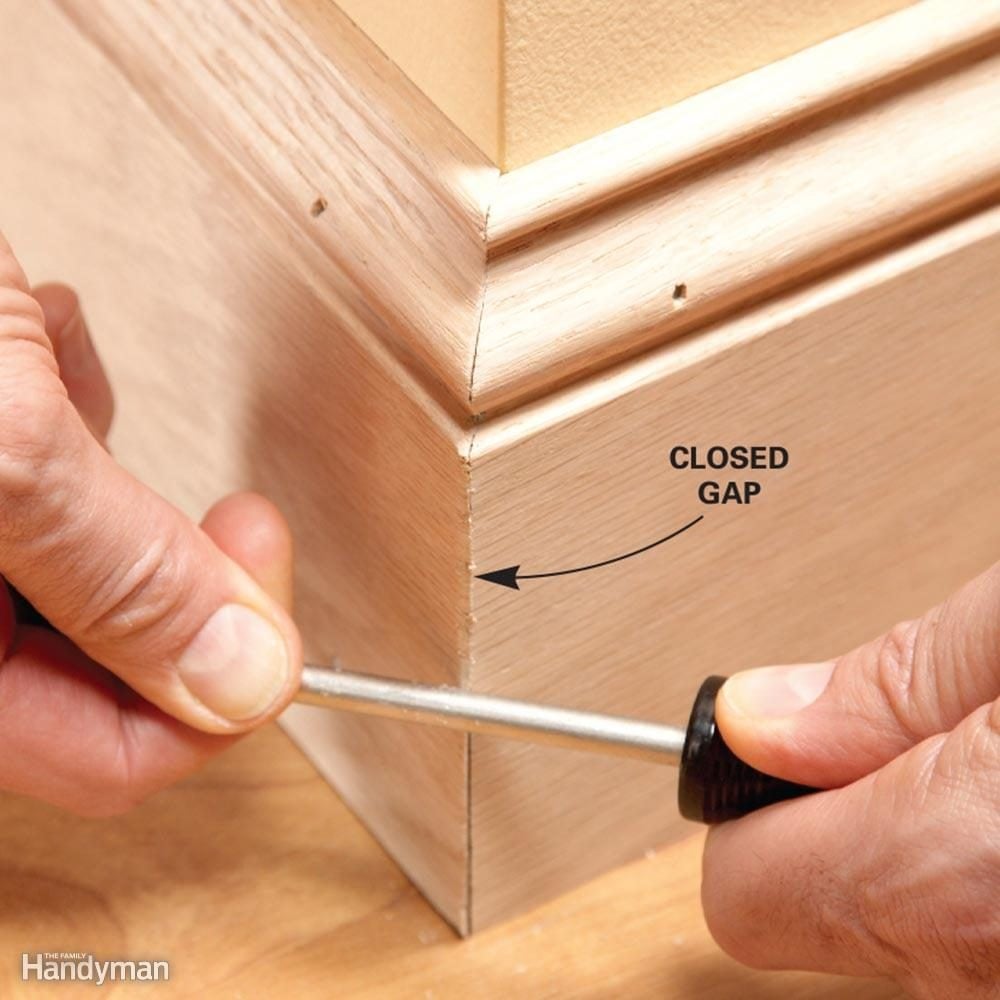
Burnish the Corner
If your baseboard or crown molding has a slight gap in the outside corner miter, you can hide it by rubbing the tip of the miter with the shank of a screwdriver or nail set. The bent fibers will disguise the gap, and the slightly rounded corner will be less likely to get chipped or damaged. The best way to prevent this problem is to cut your outside corner miters about 1 degree sharper than the actual angle so the tips of the miters touch. This will leave a tiny gap at the back of the miter where it's barely noticeable.
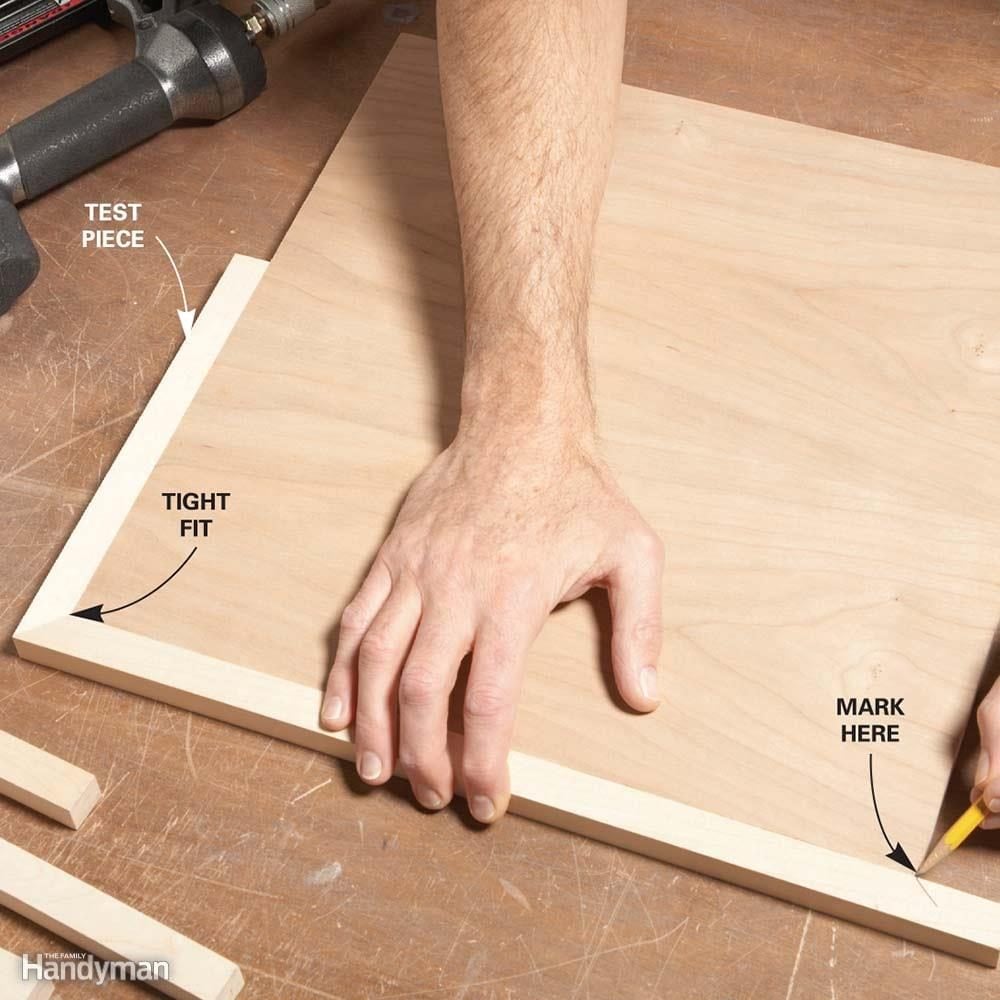
Miters: Fit One Miter at a Time
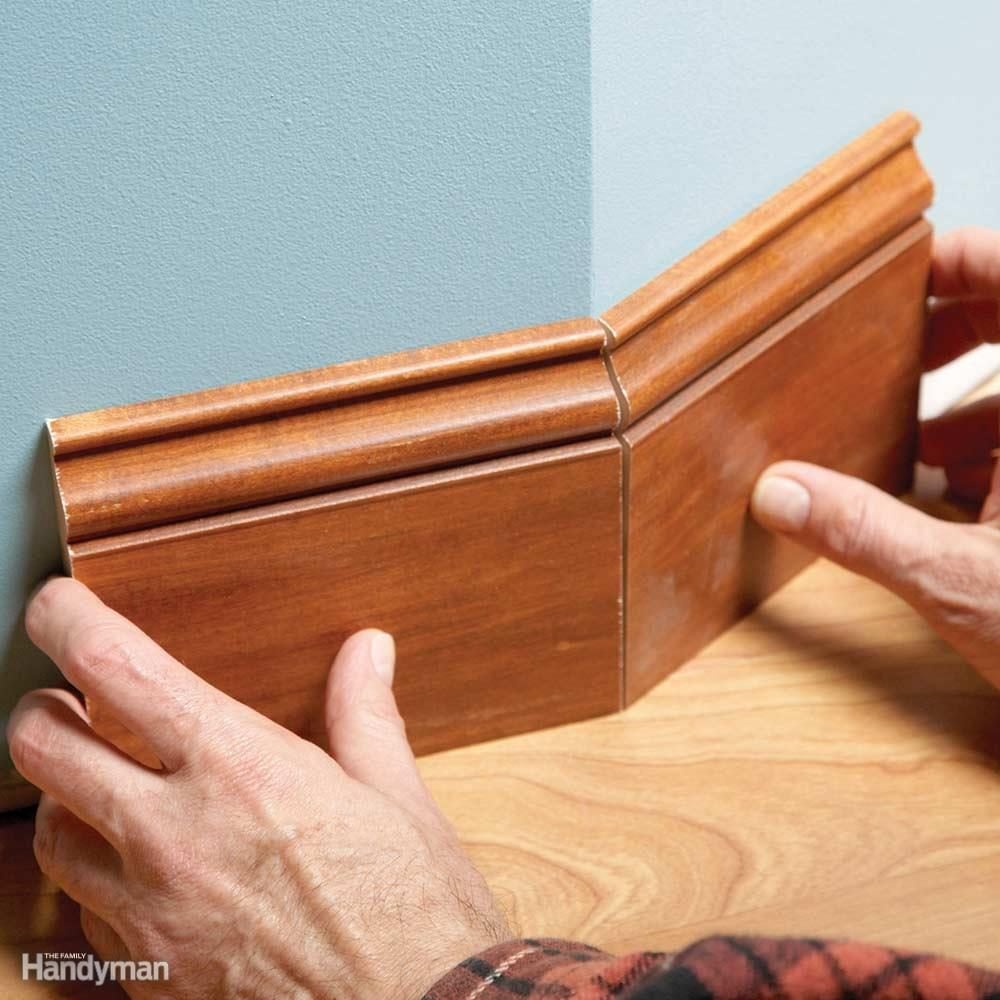
Miters: Guess and Test
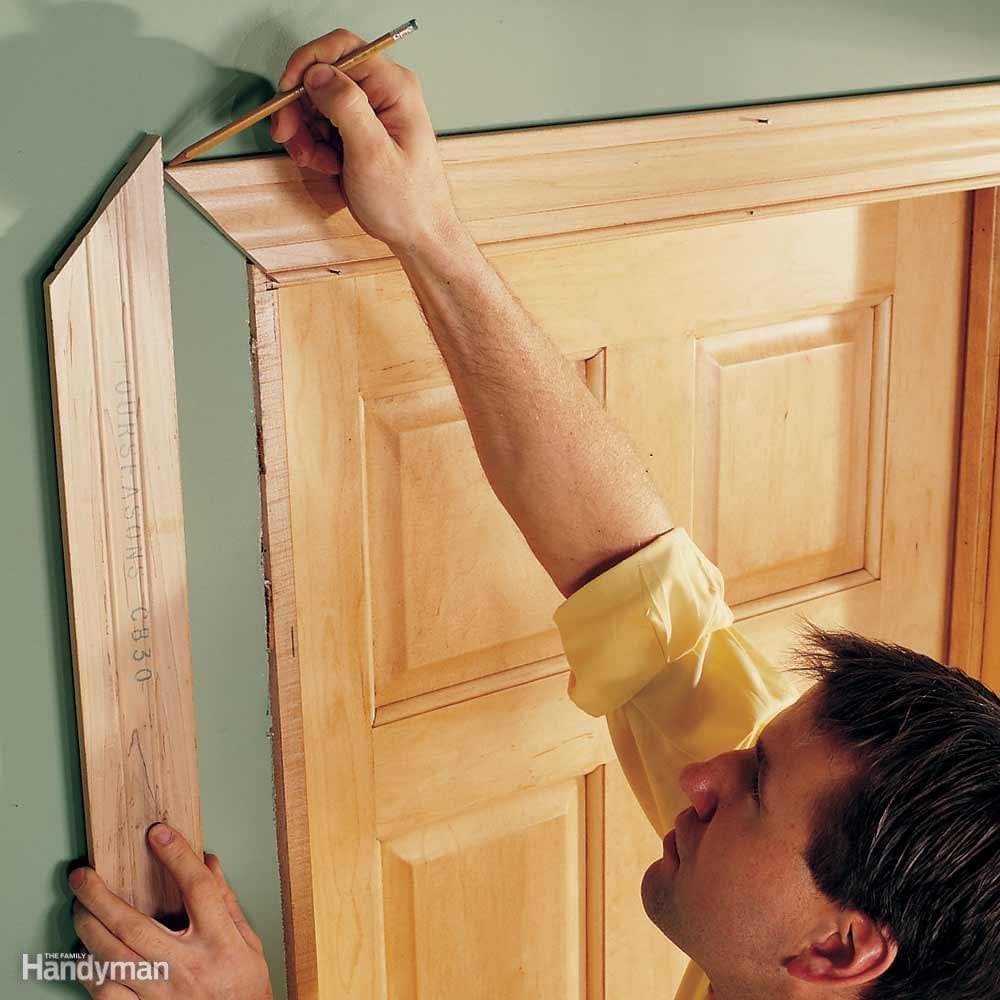
Mark, Don't Measure
Holding trim in place and marking it is always more accurate than measuring, often faster and it eliminates mistakes. This is good advice for other types of carpentry work too, like siding, laying shingles and sometimes even framing.
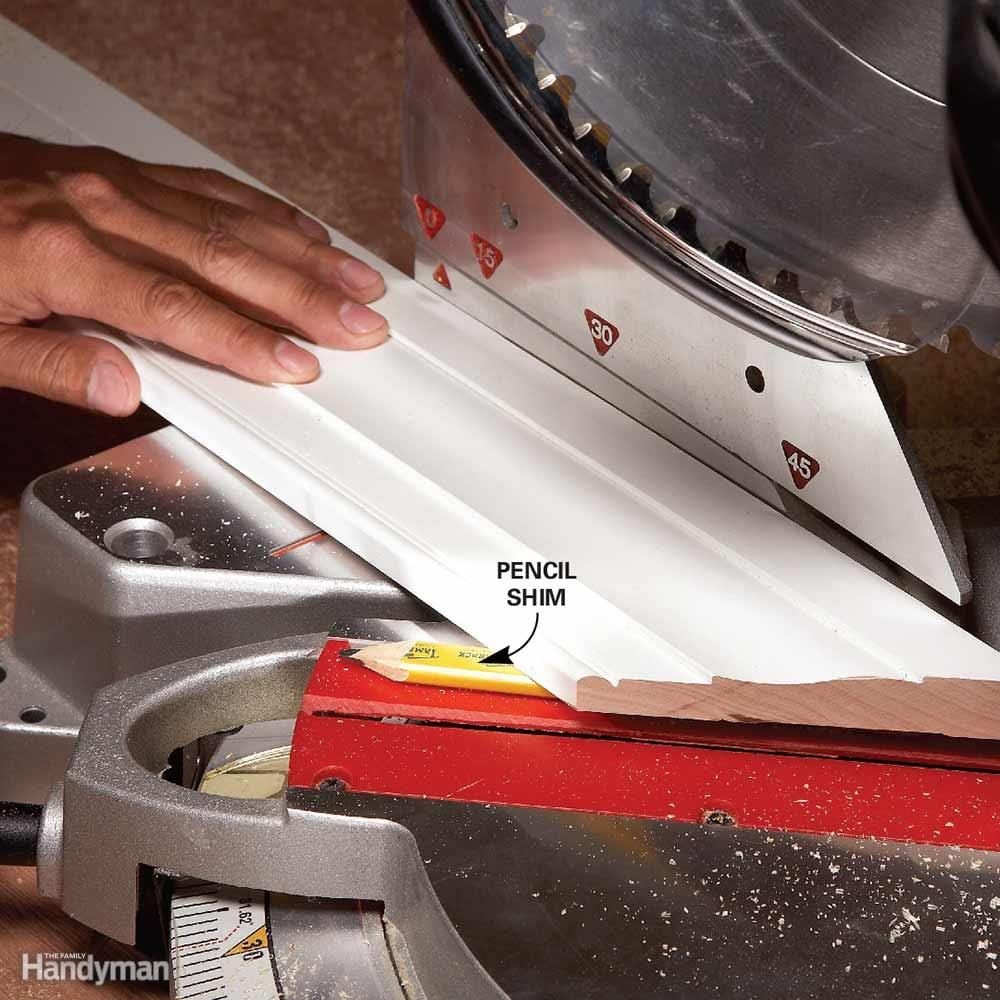
Miters: Use a Shim to Cut a Back Bevel
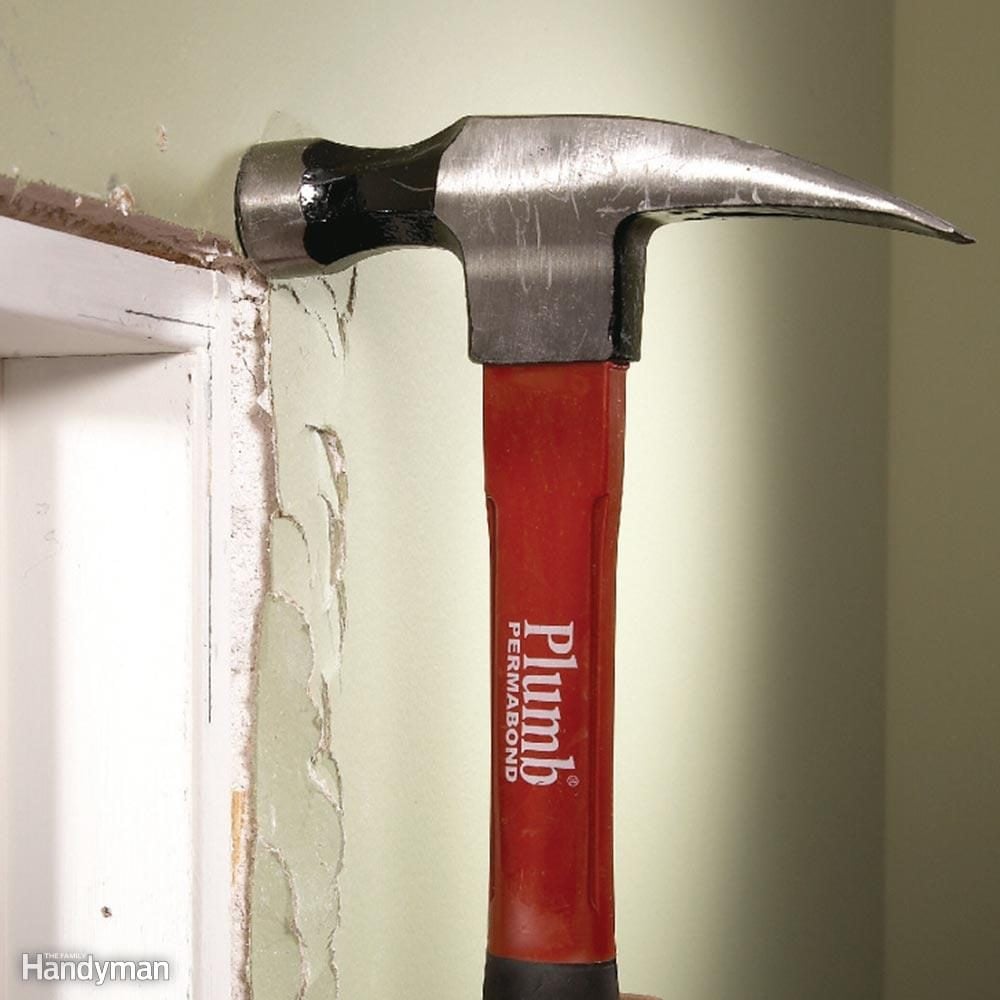
Smash Protruding Drywall
Occasionally window and door jambs end up slightly recessed, which causes trouble when it comes time to install trim. Correct minor level differences by either bashing in or cutting out the drywall along the edge of the jamb. But be careful to avoid going beyond what will be covered by the trim. If the level difference is greater than about 3/16 in., nail thin strips of wood, called jamb extensions, to the jamb to bring it flush to the wall surface.
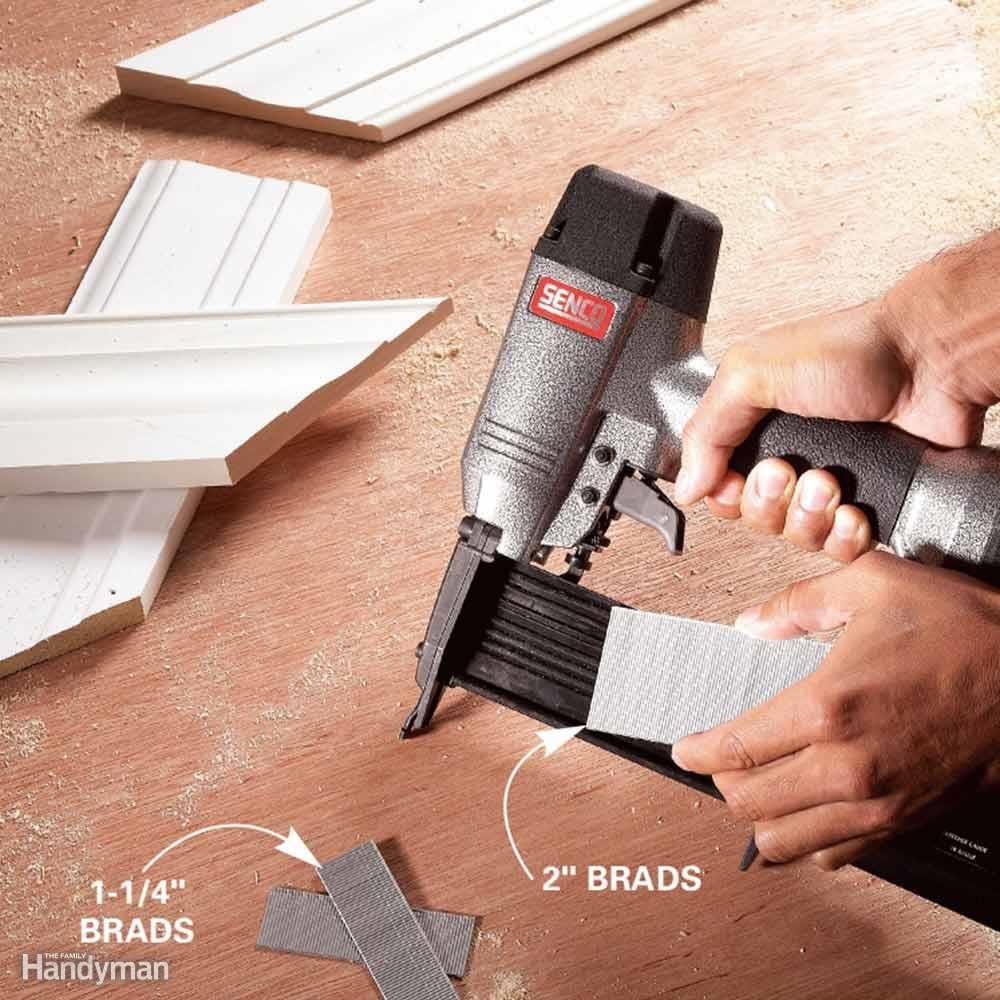
Use a Brad Gun for Best Results
It's hard to beat a nail gun for perfect miters, especially if you're not skilled with a hammer. Trim nail guns allow you to hold the moldings in perfect alignment while you pin them in place. If you can afford only one trim gun, buy one that shoots thin 18-gauge nails up to 2 in. long. Fifteen- and 16-gauge nailers are good where more strength is needed, such as for nailing jambs, but the thicker brads make larger, more conspicuous holes and can crack thin moldings. Use shorter brads to nail the molding to the jamb, and long brads along the outside edges.
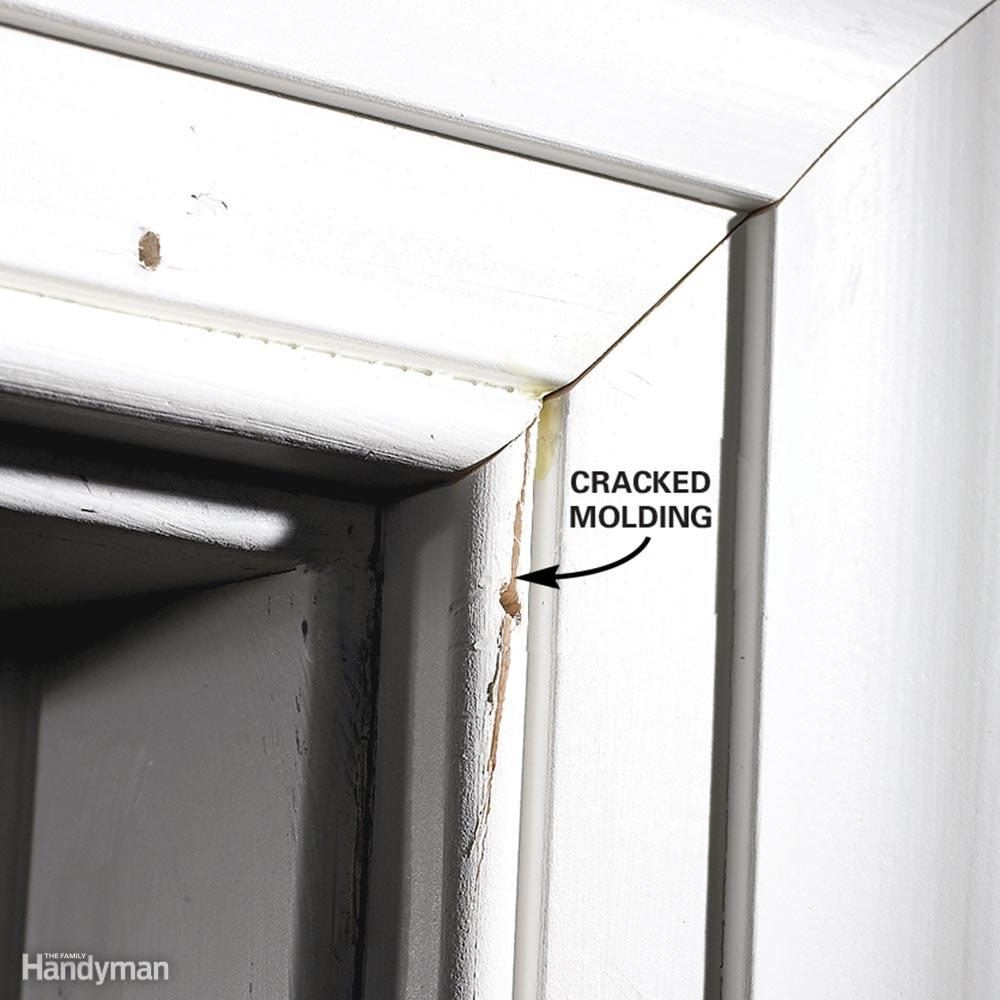
Don't Nail Too Close to Ends or Edges
Even with an 18-gauge trim nailer, you can split the molding if you're not careful. Avoid nailing less than 3/4 in. from the end of a trim piece or less than 1/4 in. from the edge.
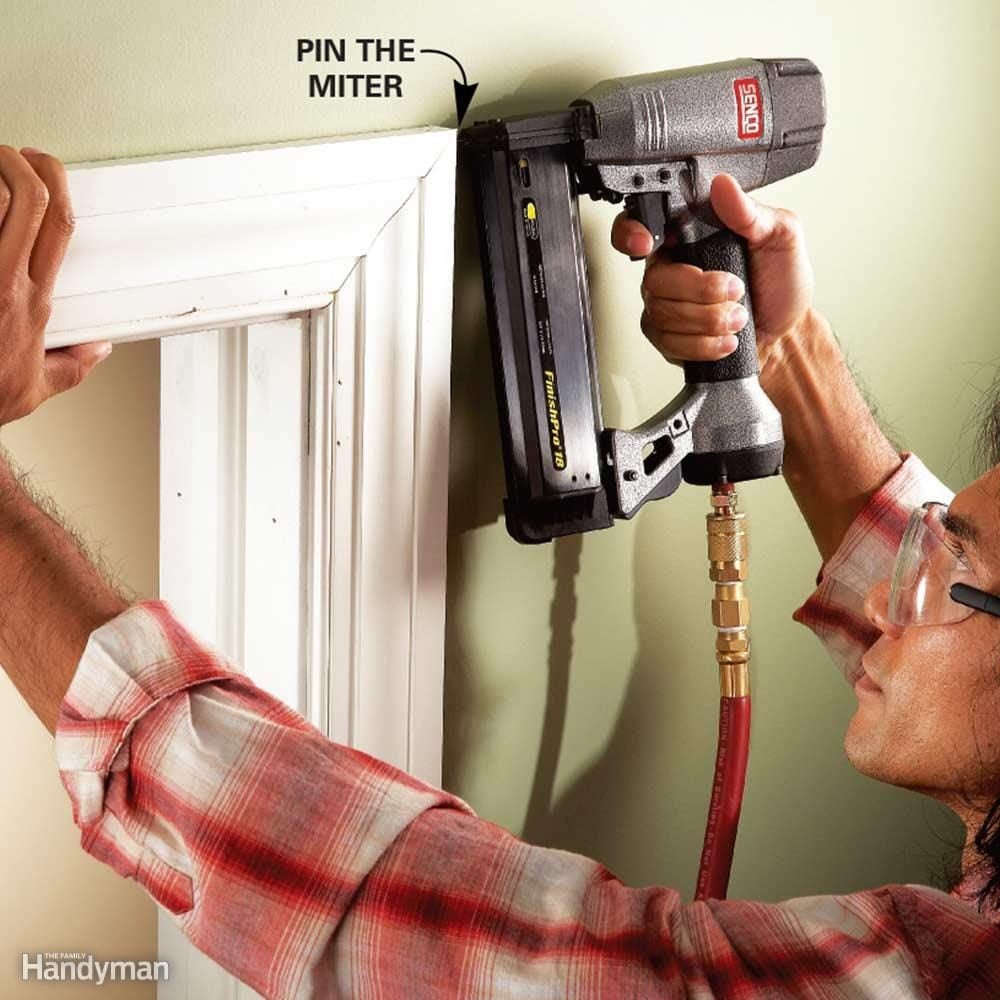
Pin the Miter Before Nailing the Outside
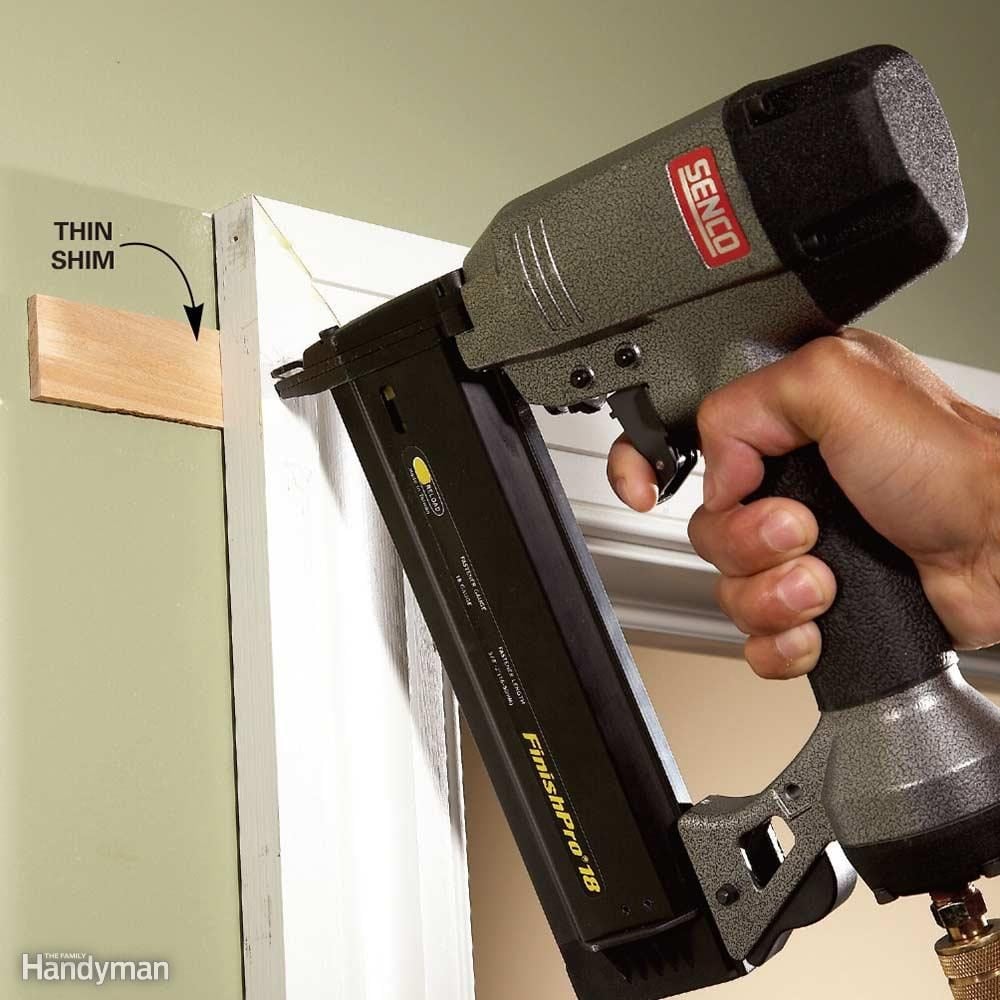
Shim Behind the Miter
If there's a slight gap between the molding and the wall, don't press the trim tight to the wall and nail it; the miter joint might open up. Instead, slip a thin shim between the molding and the wall. Then nail the outside edge of the trim. If the gap and shim are visible, fill the crack with caulk before painting.
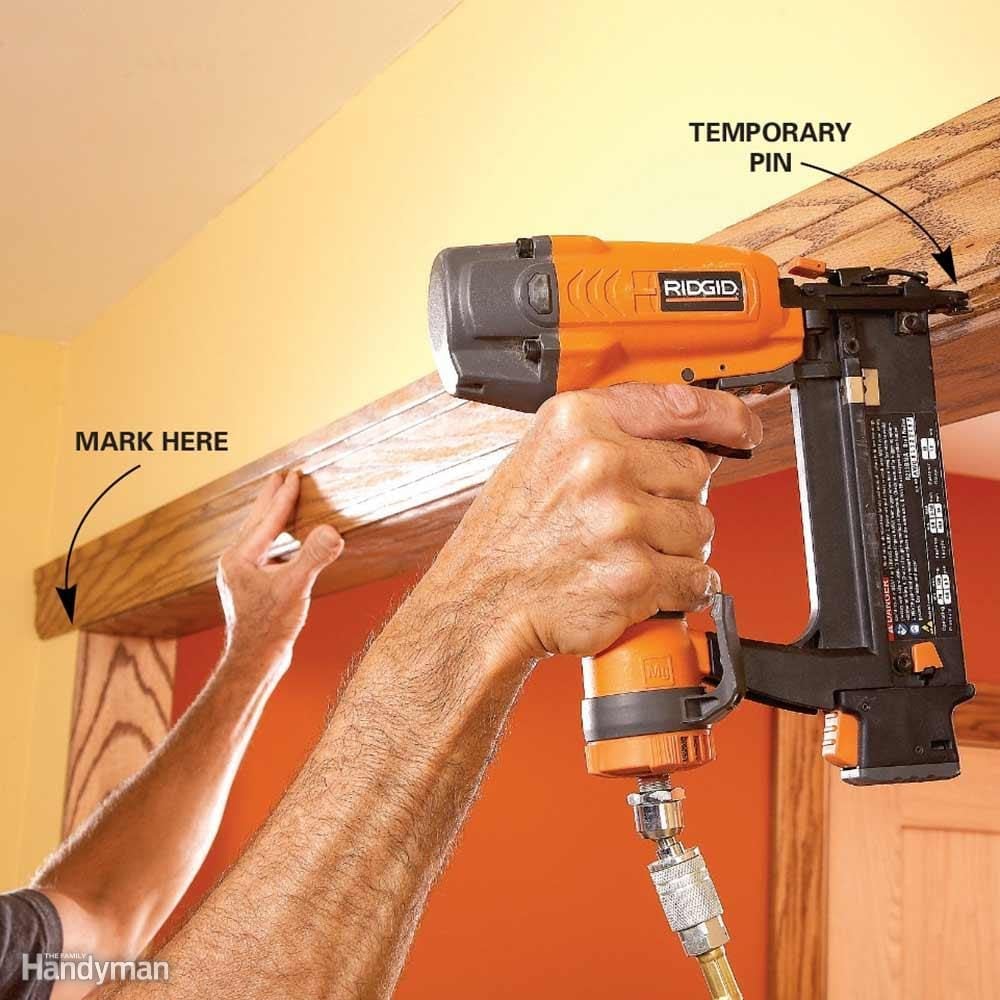
Brad Nailer Helper
Holding trim in place to mark it for length is faster and more accurate than measuring. But that's not easy to do with long pieces of trim. When you're cutting miters and need to hold the end of a long piece of casing in place while you mark the far end, just pin it with your brad nailer. It doesn't take much. If you're putting up 3/8-in.-thick trim, just tack it with a 1-in. brad. After marking, pull the molding loose. You'll have to pull the nail and fill one extra nail hole in the trim.



















